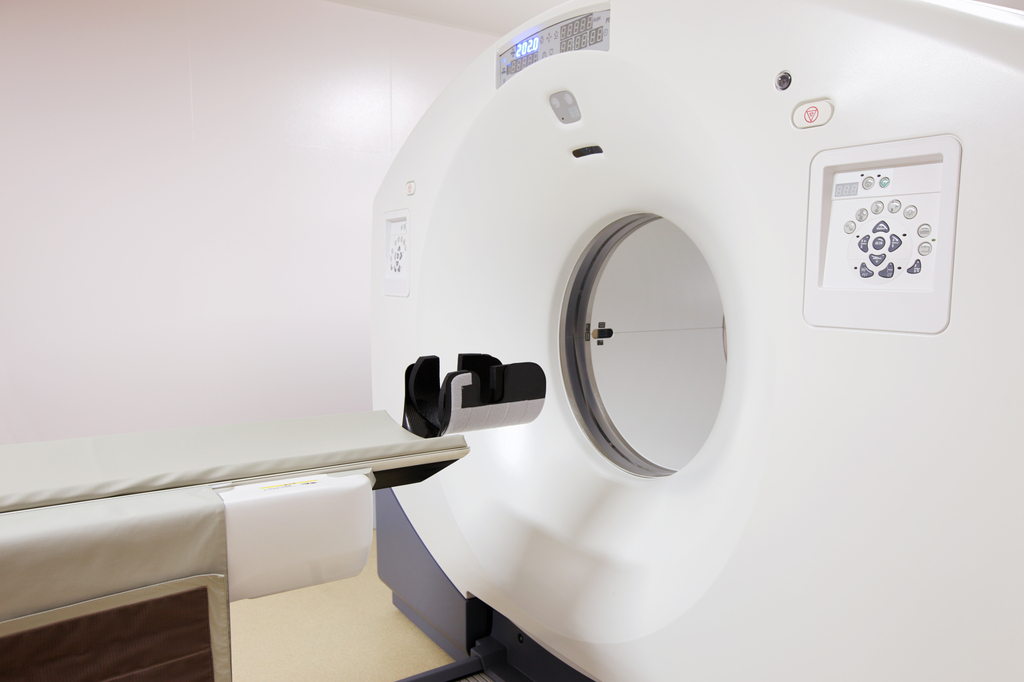Muscle Fat Replacement Linked to Respiratory Impairment

Fat replacement of back, abdominal, and trunk muscles in late-onset Pompe disease (LOPD) correlates with diaphragm weakness and worsening respiratory function, a long-term clinical study has determined.
“These results suggest that identification of fat replacement in these areas … should lead to a closer monitorization of respiratory muscle function over time,” the investigators wrote.
The study, “Correlation Between Respiratory Accessory Muscles and Diaphragm Pillars MRI and Pulmonary Function Test in Late-Onset Pompe Disease Patients,” was published in the journal Frontiers in Neurology.
In LOPD, symptoms vary in type and severity, ranging from asymptomatic patients to severe respiratory muscle weakness requiring invasive ventilatory support. The only spcific treatment for LOPD is enzyme replacement therapy (ERT) with Lumizyme (alglucosidase alfa, sold as Myozyme in the European Union).
Muscle MRI can be used to identify replacement of skeletal muscles with fat in LOPD patients, with trunk and lower limb muscles being most susceptible. In functional tests, the level of fat replacement corresponds with the severity of muscle impairment, making fat replacement a biomarker of severity of muscle weakness.
Researchers in Spain investigated fat replacement of the thoracic, paraspinal (back) and abdominal muscles, as well as the diaphragm pillars (fibers), and its long-term impact on respiratory function and respiratory muscle strength in LOPD patients. The diaphragm is the dome-shaped muscle that allows the chest to move with each breath.
Participants in the long-term analysis were in the POMPE 2013 (NCT01914536) clinical trial, which enrolled 36 LOPD patients. Annual follow-ups were conducted from December 2013 through June 2018. Diaphragm weakness was assessed by forced vital capacity (FVC) measuring the difference in respiratory function in a seated and lying position.
Twenty (55.5%) participants were female and their overall mean age was 43.9. A total of 23 patients were on Myozyme with a mean treatment duration of 4.3 years. One patient started treatment during follow-up. Eleven patients required noninvasive mechanical ventilation at study start, and the one who began ERT treatment began that type of ventilation later during the study. Eight participants who were asymptomatic and did not require ERT showed no respiratory symptoms.
At baseline (study start), a higher degree of fat replacement was observed in abdominal and paraspinal muscles than in thoracic muscles. Also, fat replacement in abdominal and paraspinal muscles, as well as diaphragm pillars, was significantly more pronounced in ventilated patients compared to those not on ventilatory support. The difference was not observed in thoracic muscles.
During follow-up, a significant progression of fat replacement was observed in thoracic, abdominal, and paraspinal muscles. Signs of mild fat replacement in paraspinal and abdominal muscles were detected in presymptomatic patients.
The group needing ventilatory support showed significantly reduced respiratory function compared to non-ventilated patients, at both the baseline and final follow-up visits. Participants requiring breathing support showed a greater change (worsening) in FVC during follow-up.
Global, thoracic, abdominal, paraspinal and diaphragm fat replacement were tied significantly to diaphragm weakness at study start. In addition, fat replacement scores at baseline were predictive of scores at the three-year follow-up, especially for the global, abdominal, and paraspinal muscles.
“Fat replacement of paraspinal, abdominal, and trunk muscles correlates … is able to predict worsening in respiratory muscle function tests that could lead to an emerging ventilatory dysfunction,” the investigators wrote.
Interestingly, in a subset of patients with mild-to-moderate abdominal, severe paraspinal, and no diaphragm fat replacement, no diaphragm dysfunction was observed.
Among the limitations of the study is the use of an assessment of fat replacement that is observer-dependent and potentially inconsistent over time, the scientists stated.
The original POMPE 2013 trial was funded by Sanofi Genzyme, the maker of Lumizyme.






